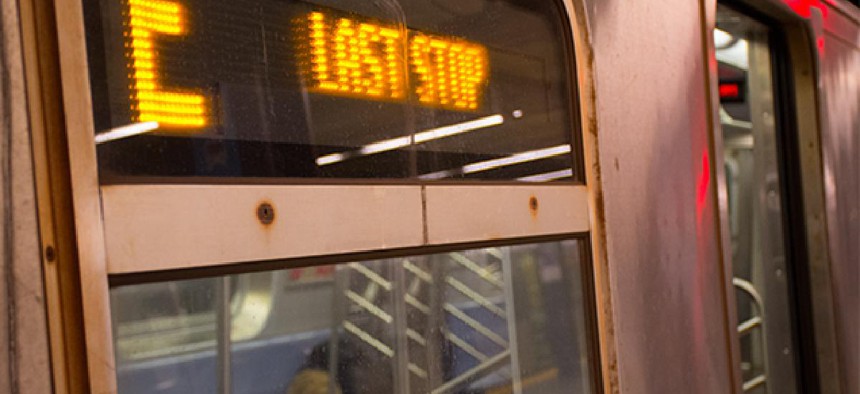Photos of a night on the New York subway

All photos by Zach Williams/ NYN Media
When a Social Security check didn’t come around Christmas, 70-year-old Chris turned to one form of homeless shelter in New York City that remains open 24 hours a day.
He’s just one of many homeless people who turned to the subway system to escape the harsh cold on Dec. 27 and throughout the winter. They are just a small but visible fraction of the city’s historically high homeless population, which may exceed 60,000 people. The reasons for sleeping on the subway are varied: mental illness, drug abuse and poverty are among them and solutions require a deep dive into data, policies and economic trends.
Choosing one subway line over another can come down to a pragmatic question, which one is warmest. That means the E line has a disproportionate amount of homeless people because it is one of just two lines that run underground for their entire duration. Nonprofits like the Bowery Residents’ Committee contract with the MTA and the New York City Department of Homeless Services to offer outreach services to homeless people. Homeless people can go to a shelter anytime, but many fear for their safety or are suspicious of outreach workers, who are the front-line workers in the city’s “housing first” approach to homelessness – an evolution from previous city approaches to solving homelessness that were detailed in a recent NYN Media Insights podcast featuring Thomas Main, a professor at the Baruch College School of Public Affairs.
NYN Media reporter Zach Williams has tracked the homeless population on the E line for the past several years. He spent Wednesday night on the E line, riding back and forth between lower Manhattan and Jamaica, Queens, to see whether the return of winter weather also marks a return for this itinerant population of New Yorkers.

Women make up a small fraction of homeless people sleeping on New York City subways.

Tensions between police and activists have decreased since 2014 when NYPD planned to evict homeless people from the E line, purportedly to clean it.

Shopping carts are a common way for people to take their personal possessions with them throughout the night.

The experience of being homeless makes many people feel invisible despite the close proximity of other riders.

Noise, police, fellow riders and boredom are challenges to a good night's sleep on the train. Some subway sleepers spend the night with little to do, like this man in 2016.

Some of the New Yorkers who are most familiar with subway sleepers are commuters who come and go late night and early in the morning between Manhattan and Queens.

A man offers a prayer after receiving money from a fellow E train rider.

A man tucked food into his jacket to keep track of it while he slept.

The number of people sleeping on the train dramatically increases around midnight when some trains accommodate several homeless people per car.

The subway provides warmth, but other basic necessities remain a challenge for homeless people who avoid the shelter system.

A man gathers his possesions as he gets ready to get on the E train at its terminus in Jamaica, Queens.
NEXT STORY: NYN Media Buzz: Dec. 28, 2017
